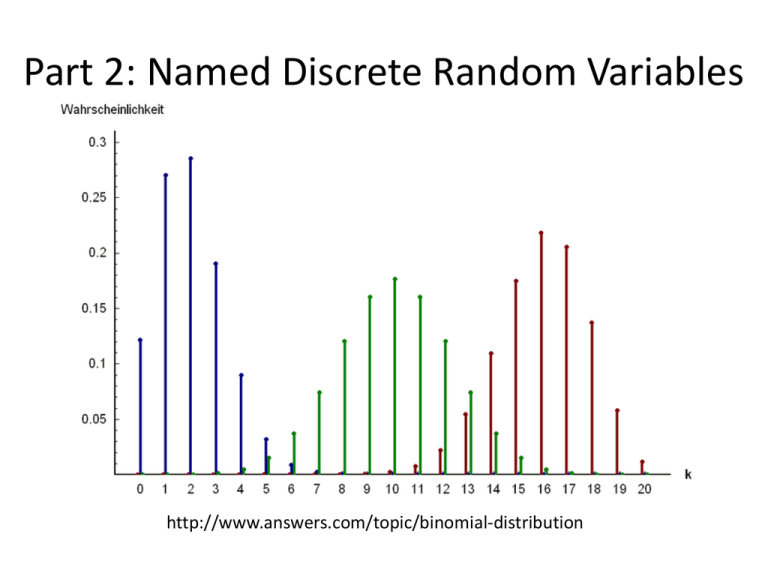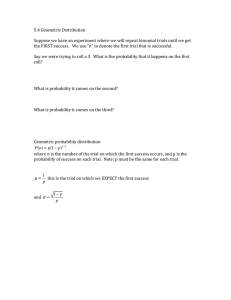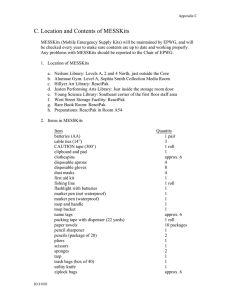Part 2: Named Discrete Random Variables
advertisement

Part 2: Named Discrete Random Variables http://www.answers.com/topic/binomial-distribution Chapter 16: Geometric Random Variables http://raven.iab.alaska.edu/~ntakebay/teaching/programming/probability/node8.html Geometric distribution: Summary Things to look for: BIS Variable: X = # of trials until the first success (1 ≤ X) Parameters: p = P(S) = constant, q = P(F) = 1 – p Mass: P(X = x) = qx-1p, x = 1, 2, 3, … 1 𝔼 𝑋 = 𝑝 𝑞 𝑉𝑎𝑟 𝑋 = 2 𝑝 Example: Geometric Distribution Suppose that we roll an 20-sided die until a '1' is rolled. Let X be the number of times it takes to roll the '1'. a) Why is this a geometric distribution? b) What is the PMF of X? c) What is the probability that it will take exactly 10 rolls? d) If you decide in advance that you will roll the die 10 times, what is the probability that you will have exactly one ‘1’? How is this different from part c)? e) What is the expected number of rolls? f) What is the standard deviation of the number of rolls? g) *What does the mass look like? h) *What does the CDF look like? Shape of Geometric PMF px(x) p=0.05 CDF 1 0.06 0.05 0.8 0.04 0.6 0.03 0.4 0.02 0.2 0.01 0 0.00 0 20 40 60 80 100 x 0 20 40 60 80 100 X Example: Geometric r.v. (cont) Suppose that we roll an 20-sided die until a '1' is rolled. Let X be the number of times it takes to roll the '1'. i) What is the probability that it will take no more than 10 rolls? j) What is the probability that it will take between 10 and 20 rolls (exclusive)? k) Determine the number of rolls so that the person has a 90% or greater chance of rolling a ‘1’? Example: Geometric r.v. (cont) Suppose that we roll an 20-sided die until a '1' is rolled. Let X be the number of times it takes to roll the '1'. h) What is the probability that it will takes more than 10 rolls to roll the ‘1’? i) Assuming that it takes more than 20 rolls to roll the ‘1’. Find the probability that it will take more than 30 rolls to roll the ‘1’?

